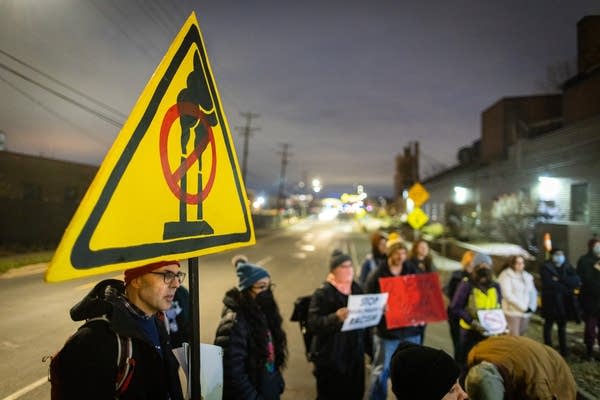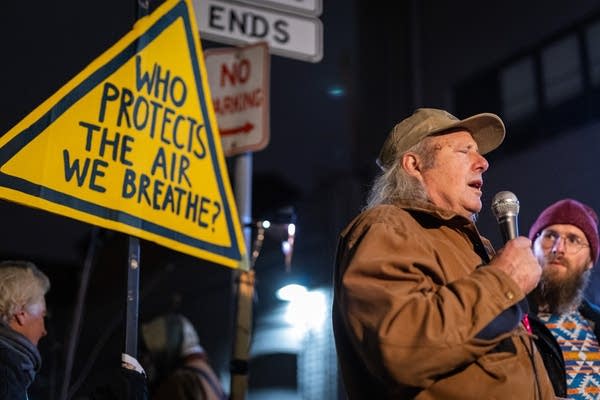Smith Foundry faces scrutiny after inspection finds violations, activists pressure state to step in

Go Deeper.
Create an account or log in to save stories.
Like this?
Thanks for liking this story! We have added it to a list of your favorite stories.
Updated: Nov. 21, 10:45 a.m.
An iron foundry in south Minneapolis is facing scrutiny after a federal inspection in May found violations of both federal and state pollution regulations.
Smith Foundry, located in the East Phillips neighborhood, underwent a surprise Environmental Protection Agency investigation in May. In a report obtained by the Sahan Journal, the agency noted several problems with the site’s pollution control system. The result was elevated emissions of particulate matter and lead.
Now, local activists and neighbors are pressuring state and federal regulators to step in — and asking why the Minnesota Pollution Control Agency hasn’t done so already. They say they want the facility shut down.
The federal inspection findings
The EPA noted several issues in its inspection. Some equipment meant to filter pollution wasn’t working. Inspectors noticed cracks in ductwork and missing pollution capture equipment.
Turn Up Your Support
MPR News helps you turn down the noise and build shared understanding. Turn up your support for this public resource and keep trusted journalism accessible to all.
Smith Foundry is required by its permit to report issues with its equipment to state regulators. The EPA documents state that the foundry failed to report several problems and did not keep all required records of equipment functions.
The result of the unreported problems was elevated amounts of particulate matter and lead emissions, the EPA said.

Both these pollutants can have health impacts, according to the EPA. Particulate matter can cause respiratory symptoms, such as coughing, chronic bronchitis, and asthma.
In high amounts, lead can contribute to a variety of health issues, such as high blood pressure, heart disease and learning deficits. Infants and young children are especially sensitive to lead.
The community response
Residents and activists in East Phillips have been raising concerns about the foundry for years.
Joe Vital lives nearby and works with the East Phillips Neighborhood Institute (EPNI), a local environmental justice organization.
“Neighbors can see plume coming out of Smith Foundry,” Vital said. “It oftentimes tastes like a mechanic's shop in the neighborhood.”
When Vital learned about the EPA findings, he felt vindicated — but also angry.
“Quite frankly, it shouldn’t be allowed to operate in this neighborhood. There’s no excuse for why it wasn’t shut down immediately when these findings were discovered,” Vital said.
The East Phillips neighborhood has a fraught environmental history. In 2004, the EPA began a years-long cleanup project in the area due to arsenic found on hundreds of properties, likely from a former pesticide plant.
The diverse neighborhood has worse-than-average health outcomes compared to the rest of the state, too. Asthma rates are higher in East Phillips than in surrounding ZIP codes, according to state data.

Recently, local activists won a years-long tug-of-war over the former Roof Depot site just down the road from Smith Foundry, which the city of Minneapolis wanted to demolish and replace with a public works facility.
Over concerns about pollution, EPNI and other activists fought the development, eventually purchasing the site with the help of the Minnesota State Legislature.
Now, activists are mobilizing around the foundry.
Tania Rivera runs a day care near Smith Foundry. At a protest, she said she wants better from state regulators and from the foundry.
“You failed the neighborhood of East Phillips yet again,” Rivera said. “My community of East Phillips is beautifully diverse and full of socially conscious people. This environmental and systemic racism needs to stop now.”
Rep. Hodan Hassan, DFL-Minneapolis represents the East Phillips neighborhood; in a statement, she called for accountability for Smith Foundry.
“Community activists and organizers have fought this fight many times over, and this one is no exception,” Hassan said. “It is vital we hold Smith Foundry accountable for its emissions violations and harm to the community — the health and well-being of the entire neighborhood hinges on it.”

What happens now
The EPA notified Smith Foundry of its findings in August, starting an ongoing investigation process. Now the foundry has a chance to meet with federal regulators and provide more information. Under the federal Clean Air Act, the EPA could pursue several penalties, including a compliance order and judicial civil or criminal action.
Smith Foundry said in a statement that it’s fixing the problems.
“We have been actively working with regulators to address and correct any issues identified in the EPA’s August report,” the foundry stated. “Also, we are working with the EPA to complete the requested emissions testing and have engaged an engineering firm to help carry out those tests.”
State regulators are involved, too. The Minnesota Pollution Control Agency issues Smith Foundry’s permits and oversees its compliance.

“The Minnesota Pollution Control Agency shares residents’ concerns about air quality in the neighborhood surrounding Smith Foundry and recognizes the community’s frustration,” the MPCA said in a statement.
The MPCA conducted an unannounced inspection of the facility on Nov. 6 in response to the EPA’s findings. A spokesperson said that all pollution control equipment was working during that inspection. The MPCA is also conducting air quality testing around the site and installing two new air quality monitors to determine levels of pollutants.
This isn’t the first iron foundry to catch the MPCA’s attention this year: the agency fined Northern Iron LLC $41,500 in October for modifying its pollution control equipment without disclosing the changes. The violations occurred over the course of 15 years.
Smith Foundry is in the process of renewing its permit with the MPCA. Currently, the MPCA is waiting for information from the foundry about measures it will take to reduce emissions as required under state law. Past legislation has outlined steps and guidelines to limit pollution in specific neighborhoods, including East Phillips.
The MPCA says it expects Smith Foundry to submit that information in January 2024. The process will include a public comment period.

Meanwhile, activists and community members say they want to see the foundry shut down.
“Smith Foundry needs to be held to the highest standard,” Vital said. “It shouldn’t be allowed to exist in our neighborhood.”
The MPCA is holding two community meetings to give an update on the EPA investigation into Smith Foundry, the MPCA permitting process, and ongoing air quality monitoring.
Neighbors can come to the Phillips Community Center on Nov. 27 or join a virtual meeting on Dec. 1. Representatives from the MPCA, the EPA and Smith Foundry will be in attendance.
Editor’s note (Nov. 21, 2023): This story was updated to clarify details about the permit-renewal process between Smith Foundry and the MPCA.



